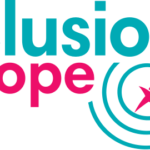This is a video about easy to read, recorded by Soufiane El Amrani in March 2023.
Watch the video
Read what Soufiane says in the video:
Hello everybody.
My name is Soufiane, and I work for Inclusion Europe.
I want to tell you today about easy-to-read.
What it is and why it is important.
A lot of people have difficulty understanding complicated text that affect their life.
For example, health care information or how to access their bank accounts.
People need to understand this information to live their lives independently.
Easy-to-read is information that people with intellectual disabilities are able to read and understand.
Easy to read is important because it helps people to know what they are
So that they can;
- know their rights;
- make everyday decisions about their lives;
- and understand what is being done about disability services and have a say in relevant policies.
People with intellectual disabilities have a right to access information in easy-to-read.
A good way of making an easy-to-read communication is to:
- Use simple words and short sentences.
- Explain any difficult words that need to be used.
- Use large text and pictures to help people understand and follow the text.
But the most important rule is to make sure you always have a person with intellectual disabilities read and review the text!
For more on how to make easy-to-read see our guidelines.
Big texts in easy-to-read
It is important that people can understand big texts that affect their lives.
One example of how this can be done is the Istanbul Convention
This is a document about stopping violence against women and girls.
Here you can see the Istanbul Convention in Easy-to-read. (.pdf)
Easy-to-read of what is in the document, not about the document
There are 2 more things I would like to talk about when using easy-to-read:
The first is that sometimes, organisations provide an easy-to-read description of a document, not an easy-to-read version of the full text.
This is not what we want.
As you can see from the Istanbul convention, important text can and should be provided in easy-to-read.
So that people with intellectual disabilities have equal access to information.
Support and participation
My second thing is that just making an easy-to-read document is not enough.
Especially when you are creating policy about disability – the whole process has to be accessible.
If you are hosting conferences or meetings, all communication about them should be in easy-to-read.
And the event itself should be accessible to people with intellectual disabilities.
For example, at the event there should be:
- A clear schedule;
- Enough time for people to participate;
- Enough time for people to talk with their supporters;
- People should use simple language and speak slowly.
This is what is needed so that people can:
- Know about their rights.
- Make decision about their lives.
- And understand what is being done about disability services and have a say in relevant policies.





